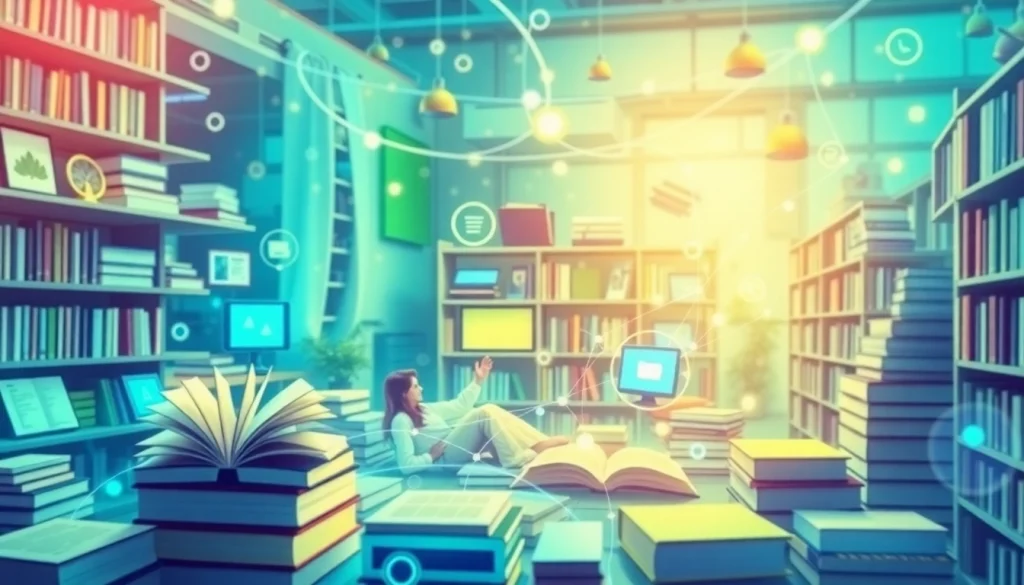
Introduction to Educational Resources
In an era where knowledge is at our fingertips, the importance of educational resources has surged dramatically. Educational resources encompass a vast array of materials, tools, and content that facilitate the learning process for students and educators alike. This article delves deep into the world of educational resources, exploring their types, significance, and the technological evolution that is reshaping how we access and utilize these resources effectively.
What Are Educational Resources?
Educational resources refer to any materials, tools, or content that enhance the process of learning. These can include textbooks, online courses, videos, articles, and interactive activities that support both teaching and learning. They can be categorized based on format, purpose, audience, and mode of delivery. In essence, educational resources serve as conduits for information exchange, skill acquisition, and knowledge retention.
Importance of Educational Resources in Modern Learning
The role of educational resources has become increasingly significant as traditional educational methods evolve. They help bridge the gap between theoretical knowledge and practical application by catering to diverse learning styles. Moreover, the integration of technology in education has revolutionized access to these resources, making them more interactive and engaging. In a globalized world, quality educational resources are crucial in fostering inclusive and equitable education.
Types of Educational Resources Available
Understanding the various types of educational resources is essential for both educators and learners. Below are some prevalent categories:
- Textual Resources: Books, articles, and online publications.
- Digital Multimedia: Videos, podcasts, and animated tutorials.
- Open Educational Resources (OER): Freely available educational materials that can be reused and redistributed.
- Interactive Tools: Quizzes, simulations, and educational games that promote active learning.
- Assessment Tools: Tools aimed at evaluating and measuring learning outcomes.
Types of Educational Resources Explained
Open Educational Resources (OER)
Open Educational Resources (OER) are learning materials that are freely accessible and openly licensed, allowing anyone to use, adapt, and share. They span a wide array of formats, including full courses, course materials, textbooks, videos, tests, and software. OER not only democratize education but also foster an environment of collaboration and innovation in teaching and learning.
Free Online Educational Platforms
Numerous online platforms offer free educational resources that cater to learners of all ages. Some of the most notable platforms include:
- Khan Academy: Provides a wealth of lessons on various subjects through interactive exercises and instructional videos.
- Coursera: Offers free courses from leading universities, with options for paid certification.
- edX: Similar to Coursera, edX features courses from renowned institutions available for free.
- OpenStax: Provides free, peer-reviewed, openly licensed textbooks.
These platforms play a pivotal role in extending educational opportunities to diverse populations, ensuring that quality education is no longer a privilege of the few.
Digital Libraries and Repositories
Digital libraries and repositories are treasure troves of information and educational materials. They allow users to access vast collections of digital resources, including books, research articles, and multimedia content. Notable examples include:
- Project Gutenberg: A large collection of free eBooks, primarily classic literature.
- ERIC: The Education Resources Information Center provides access to education literature and resources.
- Library of Congress: Offers a wide range of educational materials, digital collections, and archives.
These resources empower learners by providing them with the tools necessary to enrich their understanding and broaden their knowledge horizons.
How to Access and Utilize Educational Resources
Finding Reliable Educational Resources Online
As the internet is awash with information, discerning reliable educational resources from unreliable ones is essential. Strategies to locate high-quality resources include:
- Utilizing academic databases such as JSTOR, PubMed, or Google Scholar for peer-reviewed articles.
- Exploring established educational platforms like Coursera and edX for verified course materials.
- Checking government or educational institution websites for curriculum resources and guidelines.
Moreover, leveraging library databases can further enhance access to quality educational materials.
Best Practices for Using Educational Resources
To maximize the benefits of educational resources, consider the following best practices:
- Determine learning objectives before selecting resources to ensure alignment with goals.
- Engage with diverse formats of resources to cater to various learning styles—visual, auditory, and kinesthetic.
- Utilize collaborative and interactive resources to encourage active participation and engagement.
- Regularly evaluate and update your resource collection to ensure relevancy and accuracy.
Common Challenges and Solutions in Accessing Resources
Despite the wealth of educational resources available, several barriers can impede access:
- Digital Divide: Not all learners have equal access to technology; promoting community access points and providing devices can help.
- Information Overload: The vast amount of available information can be overwhelming. Curating and organizing resources into manageable categories can ease this issue.
- Quality Assurance: Determining the credibility of resources can be challenging. Encouraging peer reviews and following established resource guidelines can ensure quality.
Addressing these challenges through strategic planning and community collaboration can optimize resource accessibility and use.
Evaluating Quality of Educational Resources
Criteria for High-Quality Educational Resources
Not all educational resources are created equal. Evaluating the quality of these materials is crucial for effective learning. Key criteria include:
- Relevance: The content should directly relate to the learning objectives and context.
- Accuracy: Information must be factually correct and evidence-based.
- Clarity: High-quality resources should present material clearly and understandably for learners.
- Accessibility: Resources should be easy to access and engage with, regardless of the learner’s ability or background.
The Role of Reviews and Ratings
Review systems and ratings can serve as valuable indicators of resource quality. Platforms that allow users to leave feedback and ratings provide insight into the utility and effectiveness of various resources. Educators and learners alike should consider these reviews when selecting materials to ensure they make informed choices.
Measuring Impact on Learning Outcomes
Ultimately, it’s essential to assess how educational resources impact learning outcomes. Metrics such as test scores, engagement levels, and retention rates can provide significant insights into effectiveness. Conducting frequent assessments and gathering feedback will help refine resource selection and usage strategies to promote continued improvement and educational success.
Future Trends in Educational Resources
Emerging Technologies in Education
As technology continues to evolve, so do the educational resources available. Trends such as augmented reality (AR), virtual reality (VR), and artificial intelligence (AI) are transforming how learning occurs by creating immersive and adaptive experiences. Educational technologies enable personalized learning pathways tailored to individual student needs and preferences, making education more engaging and effective.
Collaborative Learning Platforms and OER Growth
Collaboration is also a significant trend in the educational landscape. Platforms that promote collaborative learning, such as Google Classroom and Microsoft Teams for Education, enable peer interaction and group work, enriching the learning experience. Furthermore, the growth of OER continues to facilitate shared knowledge and collective learning efforts, redefining education as a communal endeavor rather than an isolated one.
The Shift Towards Personalized Learning Resources
The move towards personalized learning has become a focal point in education. By leveraging data analytics and learning management systems, educators can tailor learning experiences to the individual learner’s pace and style. This adaptability enhances engagement and understanding, fostering a more effective educational environment.






